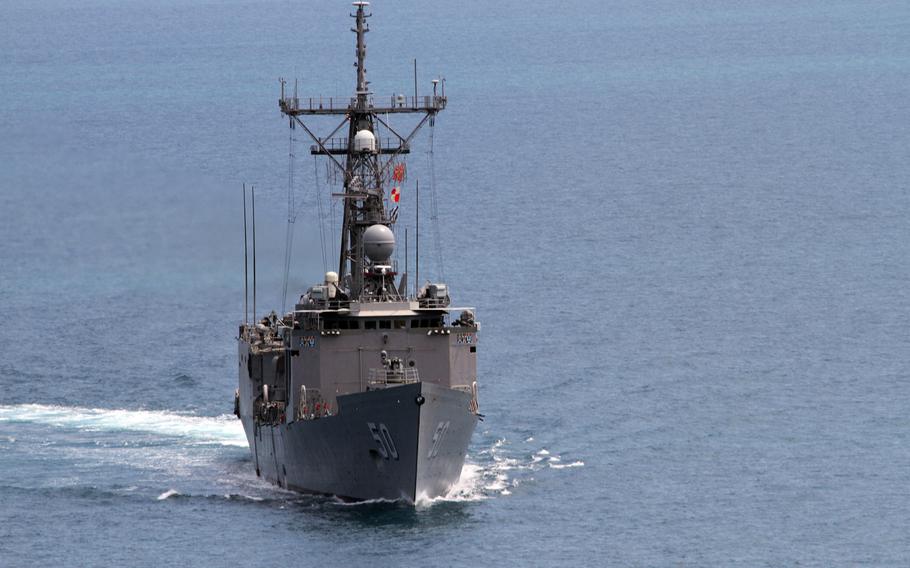
The guided-missile frigate USS Taylor in the Black Sea on May 11, 2014, while conducting a tactical maneuvering exercise with the Turkish navy. The ship went aground in the Turkish port of Samsun on Feb. 12, 2014. (David Hancock/U.S. Navy)
NAPLES, Italy — Faulty navigation was to blame for last year’s grounding of a guided-missile frigate in a Turkish port in the Black Sea, according to a Navy investigation.
The USS Taylor struck ground while entering the port of Samsun, Turkey, on Feb. 12, bending three propeller blades and leaking hydraulic oil into the water. The Navy eventually towed the ship to a facility in Crete for $4.8 million in repairs.
The incident marred a high-profile cruise for the Taylor, one of two Navy warships to sail into the Black Sea a week earlier in response to threats against the Winter Olympic Games in Sochi. The other ship was the USS Mount Whitney.
The Navy relieved the commanding officer, Cmdr. Dennis Volpe, weeks after the incident, a routine move after accidents at sea. The service approved a final version of the investigation in July and released a redacted version to Stars and Stripes this week upon request.
The investigator found the ship’s navigation team never realized it was so far to the right of its planned track into the port, even after striking ground. The track, which was determined before the ship’s approach into port, followed a narrow channel between two jetties, each of which was surrounded by shallower water marked by ship navigators as a “danger zone.”
As the Taylor transited between the jetties, crew members failed to check the ship’s position according to Navy navigation rules, which require a fix — or a new reading on position — every three minutes in dangerous waters. By the time the ship ran aground, about seven minutes had passed since the prior fix, the report said.
The crew later freed the ship, returned to the track and then moored successfully. Volpe told an investigator he thought the ship had been within the channel when it struck something. For the second approach, he ordered a small boat to go in front of the Taylor and take depth soundings, a decision criticized in the report.
The investigator also questioned why wind speed and current weren’t watched more closely as the frigate entered port. In addition, the investigator said the navigation team paid little attention to margins of error in its charts and GPS fixes.
The local pilot, a Turkish mariner brought aboard to help navigate the ship’s entry, proved unhelpful, according to the report.
Volpe was given a nonjudicial punishment, as was the ship navigator, assistant navigator and watch supervisor for the ship’s combat information center, the report said. The ship’s executive officer, who was responsible for the navigator, was written up administratively.
The Taylor returned to the Black Sea in April as part of ongoing Navy cruises in the region after Russia’s invasion and annexation of Crimea last year.
Adm. Philip S. Davidson, then-commander of U.S. Sixth Fleet, signed off on the investigation’s findings in July. The investigation, he wrote, “may be a valuable case study in the training of navigation teams.”
beardsley.steven@stripes.com Twitter: @sjbeardsley